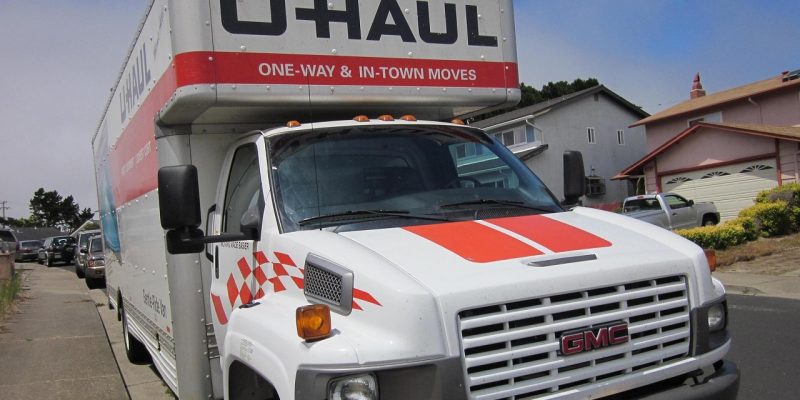One of these things is not like the other, which is bad news for Louisiana now and in the near future.
Earlier this month, U-Haul released its 2020 statistics for rental surface transport units, from which it calculates (essentially by computing incoming and outgoing traffic) a measure of state migration growth. It has done this for states off and on since 2007, but has made it a regular practice from 2015 on.
And, with one exception, Louisiana has fared poorly since then. Starting then, among the 49 North American states and the District of Columbia (Hawai’i obviously not included), it has ranked 35th, 8th, 40th, 47th, 40th, and last year 44th in terms of arrivals vs. departures.
It wasn’t always this way. After the hurricane disasters of 2005, the state shot up to 17th in 2007 and as late as 2013 was 9th. Large macroeconomic trends obviously have something to do with this; besides the repopulation after 2005 (which placed New Orleans as the second highest city in 2007), health of the oil patch also makes a difference, as witnessed in the 2016 rebound (which, if U-Haul would publish the data, likely would see a slip in 2014 and then lower to the 2015 level as energy prices tumbled).
Yet clearly the fate of energy isn’t everything. Reviewing data from the last year-over-year comparison available (third quarters of 2019 and 2020), even as most of the bottom ten states for gross domestic product change were heavy oil producers – with Louisiana checking in 42nd amid a plunge in prices – all of those states registered higher, some significantly higher, than Louisiana on the U-Haul list. In fact, although last year Texas ranked just above Louisiana in growth, it finished second on the list – one of the top two spots of which it has occupied every year from 2015 on.
As energy prices rebounded 2016-19, you would have expected inflows of workers in that industry to boost Louisiana considerably. But, keep in mind the state’s fiscal situation in this period: a small general tax increase in 2015, followed when Democrat Gov. John Bel Edwards (and a pliable legislature) triggered massive ones, mainly on sales but also somewhat on personal and corporate income, in 2016 and sustained thereon.
And where Louisiana really stands out like a sore thumb is in the bad company it keeps at the bottom. Creating a rough categorization of states depending upon political party control in the governor’s mansion, statehouse, its 2020 presidential vote, and congressional delegation composition into red, magenta, purple, indigo, and blue categories, makes the Bayou State stand out like a sore thumb on a frosty hand.
The 2017 bottom 11 comprised 6 blue, 2 indigo, a purple, a magenta (Georgia) and Louisiana. In 2018, it was 4 blue, 2 indigo, a magenta (Iowa) and reds Louisiana, Kentucky, Alabama and Oklahoma. 2019 featured 6 blue, 2 indigo, 2 purple, and Louisiana. And last year, 8 blue, an indigo, a purple, and Louisiana. The only states joining Louisiana in each year were very blue states California (never above 48th), Illinois (never above 49th), Massachusetts (never above 46th) and New Jersey (never above 43rd). No other red state ever appeared more than once (blue New York just missed appearing every year).
Advertisement
If policy-makers have learned nothing over the past couple of decades, it’s that the greater control Republicans have over state government, the more commerce and people are attracted to it – except in Louisiana. Certainly, with Edwards being Governor Nyet to reform ideas and his absolute refusal to rein in state government growth has something to do with this deviance, but Edwards gaining office also represents the fading liberal populism defining the state’s political culture that predated his time as governor, a feature absent from the high-achieving red states.
The problem, then, is more than economic policy. It is cultural and ingrained into Louisiana’s political system, replicated onto a wide variety of laws in the tax code, regulatory environment, and state-local government relations. It is why corrective measures will not yield results in years, but in decades.
But every year counts in such a long-term reclamation project, and the sooner policy-makers get started, the more likely the next generation will reap the rewards. Except, for the next three years, an obstructor-in-chief stands in the way (occasionally aided by other policy-makers, not all of whom are Democrats), trying to keep Louisiana the fly in amber until 2024.
As at the national level government an unprecedented effort launches towards the creation of one-party rule that has the potential to bring America closer to authoritarianism than ever before in peacetime (with the possible exception of the latter 1930s, although then information organs outside of government were not in collusion with government), Americans face the practical political problem of preventing that. By contrast, Louisianans have to deal with the opposite, working around retrogressive forces in order to promote desperately needed beneficial change.
Advertisement
Advertisement

